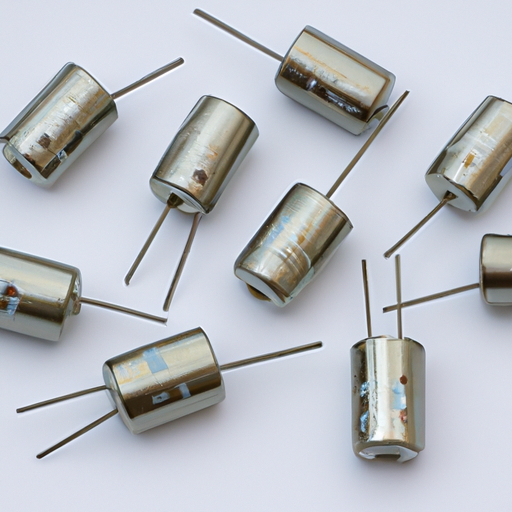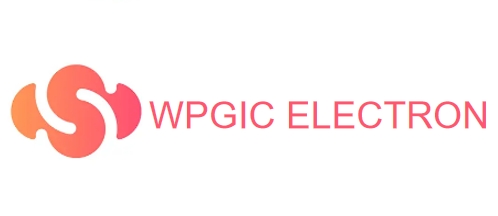Development Trends in the Capacitor and Capacitor Industry

I. Introduction
Capacitors are fundamental components in electronic devices, serving as energy storage elements that can release energy quickly when needed. They play a crucial role in various applications, from filtering signals in audio equipment to stabilizing voltage in power supplies. As technology continues to advance, the capacitor industry is evolving rapidly, driven by the demand for smaller, more efficient, and environmentally friendly components. This blog post explores the development trends in the capacitor industry, highlighting historical context, current market dynamics, technological advancements, and future outlooks.
II. Historical Context
A. Evolution of Capacitors
The history of capacitors dates back to the 18th century with the invention of the Leyden jar, one of the first devices capable of storing electrical energy. Over the years, capacitor designs and materials have evolved significantly. Early capacitors were bulky and made from glass or metal, but advancements in materials science have led to the development of more compact and efficient designs.
B. Key Milestones in the Capacitor Industry
The 20th century saw significant technological advancements, including the introduction of ceramic and electrolytic capacitors, which became widely used in consumer electronics. The rise of the digital age further propelled the demand for capacitors, leading to innovations in manufacturing processes and materials. Today, capacitors are integral to modern electronics, with applications spanning telecommunications, automotive, and renewable energy sectors.
III. Current Market Landscape
A. Overview of the Global Capacitor Market
The global capacitor market has experienced substantial growth, driven by the increasing demand for electronic devices and the proliferation of renewable energy technologies. According to market research, the capacitor market is projected to reach USD 30 billion by 2025, with a compound annual growth rate (CAGR) of around 5%. Key players in the industry include companies like Murata Manufacturing, Vishay Intertechnology, and KEMET Corporation, which are continuously innovating to meet market demands.
B. Types of Capacitors
Capacitors come in various types, each suited for specific applications:
1. **Ceramic Capacitors**: Known for their small size and reliability, ceramic capacitors are widely used in high-frequency applications.
2. **Electrolytic Capacitors**: These capacitors offer high capacitance values and are commonly used in power supply circuits.
3. **Film Capacitors**: Known for their stability and low losses, film capacitors are used in audio and power applications.
4. **Tantalum Capacitors**: These capacitors provide high capacitance in a small package and are used in portable electronics.
5. **Supercapacitors**: Also known as ultracapacitors, they store large amounts of energy and are used in applications requiring rapid charge and discharge cycles.
IV. Development Trends in Capacitor Technology
A. Miniaturization and High-Density Capacitors
As consumer electronics continue to trend towards smaller and more compact designs, the demand for miniaturized capacitors has surged. Manufacturers are investing in advanced materials and manufacturing processes to produce high-density capacitors that can fit into increasingly tight spaces without compromising performance. This trend is particularly evident in smartphones, wearables, and other portable devices.
B. Enhanced Performance Characteristics
The capacitor industry is also witnessing a push for enhanced performance characteristics. Manufacturers are focusing on developing capacitors with higher capacitance values, improved voltage ratings, and better temperature stability. These advancements are essential for meeting the demands of modern applications, such as electric vehicles (EVs) and renewable energy systems, where reliability and performance are critical.
C. Development of Environmentally Friendly Capacitors
With growing environmental concerns, the capacitor industry is moving towards the development of environmentally friendly capacitors. This includes the use of biodegradable materials and the reduction of hazardous substances in manufacturing processes. Companies are exploring alternative materials that minimize environmental impact while maintaining performance standards.
D. Smart Capacitors and IoT Integration
The rise of the Internet of Things (IoT) has led to the development of smart capacitors that can communicate and interact with other devices. These capacitors play a crucial role in energy harvesting and storage, enabling devices to operate more efficiently. As smart devices become more prevalent, the demand for capacitors that can support IoT applications is expected to grow.
V. Industry Trends and Market Drivers
A. Growing Demand in Electric Vehicles (EVs)
The electric vehicle market is one of the most significant drivers of growth for the capacitor industry. Capacitors are essential components in EV power systems, helping to manage energy flow and improve efficiency. As the demand for EVs continues to rise, manufacturers are adapting their designs and production processes to meet the specific needs of this market.
B. Renewable Energy Applications
Capacitors are increasingly being used in renewable energy applications, such as solar and wind energy systems. They play a vital role in energy storage solutions, helping to stabilize power output and improve system efficiency. As the world shifts towards sustainable energy sources, the demand for capacitors in these applications is expected to grow.
C. Advancements in Telecommunications
The rollout of 5G technology is another significant trend impacting the capacitor industry. 5G networks require high-performance capacitors to support the increased data transmission rates and reduced latency. Additionally, capacitors are essential components in data centers and networking equipment, where they help manage power supply and signal integrity.
VI. Challenges Facing the Capacitor Industry
A. Supply Chain Disruptions
The capacitor industry faces several challenges, including supply chain disruptions caused by global events such as pandemics and geopolitical tensions. These disruptions can lead to material shortages and sourcing challenges, impacting production timelines and costs.
B. Competition and Pricing Pressures
As the capacitor market becomes increasingly saturated, competition is intensifying, leading to pricing pressures. Companies must innovate continuously to maintain market share and differentiate their products. This need for innovation can strain resources and impact profitability.
VII. Future Outlook
A. Predictions for the Capacitor Market
The future of the capacitor market looks promising, with expected growth areas in electric vehicles, renewable energy, and telecommunications. Emerging technologies, such as advanced materials and smart capacitors, are likely to shape the industry landscape in the coming years.
B. Strategic Recommendations for Industry Players
To thrive in this evolving market, industry players should focus on investing in research and development to drive innovation. Collaborating with technology companies and research institutions can also foster the development of new products and solutions that meet emerging market demands.
VIII. Conclusion
In summary, the capacitor industry is undergoing significant transformations driven by technological advancements, market demands, and environmental considerations. As capacitors continue to play a vital role in modern electronics, their development trends will shape the future of various industries. The importance of capacitors in future technologies cannot be overstated, as they will remain essential components in the drive towards more efficient, sustainable, and interconnected systems.
IX. References
1. Academic journals and articles on capacitor technology.
2. Industry reports and market analyses from reputable sources.
3. Relevant books and publications on the evolution of capacitors and their applications.
In conclusion, the capacitor industry is poised for growth and innovation, with exciting developments on the horizon. As we move forward, the role of capacitors in shaping the future of technology will be more critical than ever.
Development Trends in the Capacitor and Capacitor Industry

I. Introduction
Capacitors are fundamental components in electronic devices, serving as energy storage elements that can release energy quickly when needed. They play a crucial role in various applications, from filtering signals in audio equipment to stabilizing voltage in power supplies. As technology continues to advance, the capacitor industry is evolving rapidly, driven by the demand for smaller, more efficient, and environmentally friendly components. This blog post explores the development trends in the capacitor industry, highlighting historical context, current market dynamics, technological advancements, and future outlooks.
II. Historical Context
A. Evolution of Capacitors
The history of capacitors dates back to the 18th century with the invention of the Leyden jar, one of the first devices capable of storing electrical energy. Over the years, capacitor designs and materials have evolved significantly. Early capacitors were bulky and made from glass or metal, but advancements in materials science have led to the development of more compact and efficient designs.
B. Key Milestones in the Capacitor Industry
The 20th century saw significant technological advancements, including the introduction of ceramic and electrolytic capacitors, which became widely used in consumer electronics. The rise of the digital age further propelled the demand for capacitors, leading to innovations in manufacturing processes and materials. Today, capacitors are integral to modern electronics, with applications spanning telecommunications, automotive, and renewable energy sectors.
III. Current Market Landscape
A. Overview of the Global Capacitor Market
The global capacitor market has experienced substantial growth, driven by the increasing demand for electronic devices and the proliferation of renewable energy technologies. According to market research, the capacitor market is projected to reach USD 30 billion by 2025, with a compound annual growth rate (CAGR) of around 5%. Key players in the industry include companies like Murata Manufacturing, Vishay Intertechnology, and KEMET Corporation, which are continuously innovating to meet market demands.
B. Types of Capacitors
Capacitors come in various types, each suited for specific applications:
1. **Ceramic Capacitors**: Known for their small size and reliability, ceramic capacitors are widely used in high-frequency applications.
2. **Electrolytic Capacitors**: These capacitors offer high capacitance values and are commonly used in power supply circuits.
3. **Film Capacitors**: Known for their stability and low losses, film capacitors are used in audio and power applications.
4. **Tantalum Capacitors**: These capacitors provide high capacitance in a small package and are used in portable electronics.
5. **Supercapacitors**: Also known as ultracapacitors, they store large amounts of energy and are used in applications requiring rapid charge and discharge cycles.
IV. Development Trends in Capacitor Technology
A. Miniaturization and High-Density Capacitors
As consumer electronics continue to trend towards smaller and more compact designs, the demand for miniaturized capacitors has surged. Manufacturers are investing in advanced materials and manufacturing processes to produce high-density capacitors that can fit into increasingly tight spaces without compromising performance. This trend is particularly evident in smartphones, wearables, and other portable devices.
B. Enhanced Performance Characteristics
The capacitor industry is also witnessing a push for enhanced performance characteristics. Manufacturers are focusing on developing capacitors with higher capacitance values, improved voltage ratings, and better temperature stability. These advancements are essential for meeting the demands of modern applications, such as electric vehicles (EVs) and renewable energy systems, where reliability and performance are critical.
C. Development of Environmentally Friendly Capacitors
With growing environmental concerns, the capacitor industry is moving towards the development of environmentally friendly capacitors. This includes the use of biodegradable materials and the reduction of hazardous substances in manufacturing processes. Companies are exploring alternative materials that minimize environmental impact while maintaining performance standards.
D. Smart Capacitors and IoT Integration
The rise of the Internet of Things (IoT) has led to the development of smart capacitors that can communicate and interact with other devices. These capacitors play a crucial role in energy harvesting and storage, enabling devices to operate more efficiently. As smart devices become more prevalent, the demand for capacitors that can support IoT applications is expected to grow.
V. Industry Trends and Market Drivers
A. Growing Demand in Electric Vehicles (EVs)
The electric vehicle market is one of the most significant drivers of growth for the capacitor industry. Capacitors are essential components in EV power systems, helping to manage energy flow and improve efficiency. As the demand for EVs continues to rise, manufacturers are adapting their designs and production processes to meet the specific needs of this market.
B. Renewable Energy Applications
Capacitors are increasingly being used in renewable energy applications, such as solar and wind energy systems. They play a vital role in energy storage solutions, helping to stabilize power output and improve system efficiency. As the world shifts towards sustainable energy sources, the demand for capacitors in these applications is expected to grow.
C. Advancements in Telecommunications
The rollout of 5G technology is another significant trend impacting the capacitor industry. 5G networks require high-performance capacitors to support the increased data transmission rates and reduced latency. Additionally, capacitors are essential components in data centers and networking equipment, where they help manage power supply and signal integrity.
VI. Challenges Facing the Capacitor Industry
A. Supply Chain Disruptions
The capacitor industry faces several challenges, including supply chain disruptions caused by global events such as pandemics and geopolitical tensions. These disruptions can lead to material shortages and sourcing challenges, impacting production timelines and costs.
B. Competition and Pricing Pressures
As the capacitor market becomes increasingly saturated, competition is intensifying, leading to pricing pressures. Companies must innovate continuously to maintain market share and differentiate their products. This need for innovation can strain resources and impact profitability.
VII. Future Outlook
A. Predictions for the Capacitor Market
The future of the capacitor market looks promising, with expected growth areas in electric vehicles, renewable energy, and telecommunications. Emerging technologies, such as advanced materials and smart capacitors, are likely to shape the industry landscape in the coming years.
B. Strategic Recommendations for Industry Players
To thrive in this evolving market, industry players should focus on investing in research and development to drive innovation. Collaborating with technology companies and research institutions can also foster the development of new products and solutions that meet emerging market demands.
VIII. Conclusion
In summary, the capacitor industry is undergoing significant transformations driven by technological advancements, market demands, and environmental considerations. As capacitors continue to play a vital role in modern electronics, their development trends will shape the future of various industries. The importance of capacitors in future technologies cannot be overstated, as they will remain essential components in the drive towards more efficient, sustainable, and interconnected systems.
IX. References
1. Academic journals and articles on capacitor technology.
2. Industry reports and market analyses from reputable sources.
3. Relevant books and publications on the evolution of capacitors and their applications.
In conclusion, the capacitor industry is poised for growth and innovation, with exciting developments on the horizon. As we move forward, the role of capacitors in shaping the future of technology will be more critical than ever.













